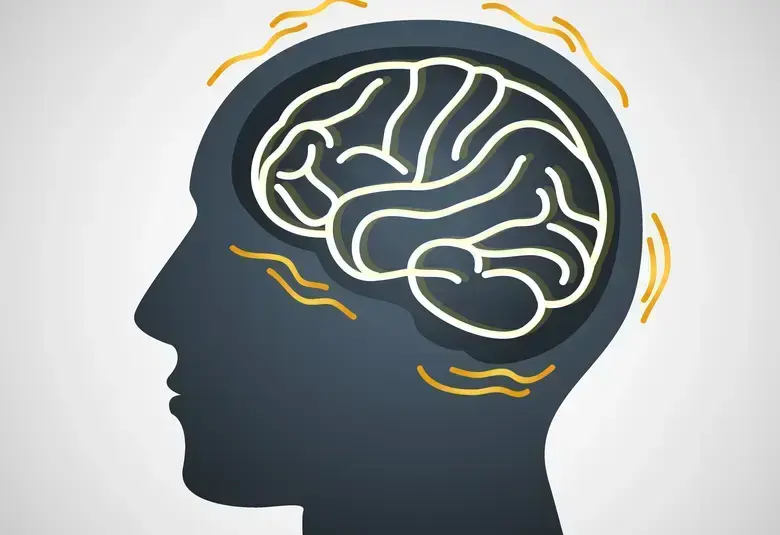Clinical outcomes are vital to assess a person with Alzheimer’s disease (AD) and track their progress. In this symposium, held at the 8th Congress of the European Academy of Neurology, Vienna, June 24−28 2022, Dr John Harrison (Alzheimer Center of the VUmc, Amsterdam, The Netherlands), discussed how the Clinical Dementia Rating scale is a comprehensive assessment of dementia, but content validity might be variable. Dr Temitope Farombi (Chief Tony Anenih Geriatric Center, University College Hospital, Ibadan, Nigeria), discussed use of the quick to administer Mini-Mental State Examination, and highlighted how the Identification and Intervention for Dementia in Elderly Africans measure may be more suitable in people with low formal education levels. Dr Rui Araújo (Centro Hospitalar Universitário São João, Porto, Portugal) talked about the Montreal Cognitive Assessment, which is used as a screening test. While advantages include sensitivity to early stage AD, there are high false positive rates in culturally diverse populations. Finally, Professor Ramin Nilforooshan (Dementia Research Institute, Imperial College London, UK) highlighted the use of digital biomarkers to track changes in the health of people with AD and how these may be used in the future to alert people to early health concerns in this realm.
임상 결과는 알츠하이머 병(Alzheimer’s disease, AD) 환자를 평가하고 그 진행 경과를 추적하는데 매우 중요합니다. 2022년 6월 24일부터 28일까지 비엔나에서 개최된 유럽 신경학회 제8차 학회에서 John Harrison 박사(Alzheimer Center of the VUmc, Amsterdam, 네덜란드)는 CDR scale(Clinical Dementia Rating scale)이 치매에 대한 포괄적인 평가이지만 그 내용 타당성은 가변적일 수 있음에 대해 논의했습니다. Temitope Farombi 박사(Chief Tony Anenih Geriatric Center, University College Hospital, Ibadan, 나이지리아)는 MMSE 검사의 신속한 사용에 대해 논의했고, 정규 교육 수준이 낮은 사람들에게 아프리카 노인 치매 식별 및 중재 척도가 어떻게 더 적합할 수 있는지 강조했습니다. Rui Araujo 박사(Centro Hospitalar Universitário São João, Porto, 포르투칼)는 선별 검사로 사용되는 MoCA에 대해 이야기했습니다. AD 초기 단계에 대한 민감성을 포함하는 장점이 있지만, 문화적으로 다양한 인구에서는 위양성 비율이 높습니다. 마지막으로, Ramin Nilforooshan 교수(Dementia Research Institute, Imperial College London, 영국)는 AD환자들의 건강 변화를 추적하기 위한 디지털 생체표지자의 사용과 이 영역에서 초기 건강 문제에 대해 사람들에게 경고하기 위해 향후 어떻게 사용될 수 있는지를 강조했습니다.
The Clinical Dementia Rating Scale
CDR, 임상치매평가척도
The Clinical Dementia Rating (CDR) scale is an hour long, semi-structured interview with the patient and a caregiver. It includes assessment in six domains: memory; judgement and problem solving; orientation; home and hobbies; personal care; and community affairs, as well as having a global score.1 Scores on these domains, from 0−3 for normal to severe with a 0.5 score for ‘questionable,’ are independent of each other and level of impairment may differ between each domain.2
임상치매평가(Clinical Dementia Rating, CDR) 척도는 환자와 간병인을 대상으로 한 1시간 길이의 반정형 면담입니다. 이는 기억, 판단 및 문제 해결, 지남력, 가정 및 취미, 개인 관리, 그리고 지역사회 문제의 6개 영역에서의 평가를 포함합니다.1 0~3점(정상)부터 0.5점(중증)까지 '치매 의심' 점수는 서로 독립적이며 장애 수준은 각 영역마다 다를 수 있습니다.2
The Clinical Dementia Rating scale is a comprehensive, semi-structured interview
CDR은 포괄적이고 반정형화된 면담입니다
Though useful, the CDR is rarely applied in clinical practice, reported Dr Harrison, and discrepancies have been found between naïve and experienced raters regarding the severity of dementia.3 Overall, Dr Harrison concluded the while it may be useful, the CDR, in his opinion, has variable content validity, variable reliability, and modest sensitivity.
유용하기는 하지만 임상 실무에서는 CDR이 거의 적용되지 않으며, 치매의 중증도와 관련하여 경험이 없는 평가자와 숙련된 평가자 사이에 불일치가 있는 것으로 발견되었다고 Harrison 박사는 보고했습니다.3 Harrison 박사의 견해에 따르면 CDR은 전반적으로 유용할 수 있지만, CDR은 가변적인 콘텐츠 타당성, 가변적인 신뢰성 및 크지 않은 민감도를 갖는다고 결론 내렸습니다.
The Mini-Mental State Examination and Identification and Intervention for Dementia in Elderly Africans measure
아프리카 노인에서 MMSE 검사 및 치매에 대한 정의 및 치료
Dr Farombi discussed the Mini-Mental State Examination (MMSE),4 which is often used as a quick screen in the clinic5 as it takes around 5−10 minutes to administer,6 and as a secondary endpoint in clinical trials.7 The MMSE quantitively assesses cognitive impairment severity6 and can be used to classify moderate stages of dementia.8 Assessments include of orientation, attention or calculation, registration, recall, language, comprehension, and motor skills.6 Possible total scores range from 0−30 with a score ≤23 indicating dementia.4
Farombi 박사는 약 5~10분만에 검사가 가능하여 진료 시5 신속 선별검사로 자주 사용되는 간이 정신상태 검사(Mini-Mental State Examination, MMSE)에 대해 논의했습니다.7 MMSE는 인지 장애의 중증도를 정량적으로 평가하며 중등도 단계의 치매를 분류하는 데 사용할 수 있습니다.8 평가에는 지남력, 주의 또는 계산, 등록, 회상, 언어, 이해 및 운동 기술이 포함됩니다.6 가능한 총 점수 범위는 0~30점으로, ≤23점은 치매를 나타냅니다.4
The MMSE is fast and easy to administer and scoring is straightforward; however, it doesn’t assess executive functioning and it may not be sensitive to subtle cognitive changes in patients with early dementia or mild cognitive impairment (MCI).4,6 Importantly, highlighted Dr Farombi, MMSE performance outcomes are affected by education level,4 and there are few local language translations.
MMSE는 신속하고 적용이 쉬우며 채점이 간단하지만, 실행 기능을 평가하지 않으며 초기 치매 또는 경도 인지장애(mild cognitive impairment, MCI) 환자의 미묘한 인지 변화에 민감하지 않을 수 있습니다.4,6 Farombi 박사는 MMSE 수행 결과는 교육 수준의 영향을 받으며4 현지 언어로 번역된 버전이 적다고 강조했습니다.
The Identification and Intervention for Dementia in Elderly Africans is of use for people with low formal education levels
아프리카 노인의 치매 진단 및 치료는 정규 교육 수준이 낮은 사람들에게 사용됩니다
The Identification and Intervention for Dementia in Elderly Africans (IDEA) is a 10−15 minute instrument with three domains: naming, language and abstract thinking; orientation; and memory and praxis. Total score is 15 with a score ≤7 indicating major cognitive impairment. IDEA, currently validated in Tanzania and Nigeria,9 shows good inter-rater reliability and internal consistency and performs well in comparison to similar tests in populations with low formal education levels.9,10
아프리카 노인의 치매 진단 및 치료(Identification and Intervention for Dementia in Elderly Africans, IDEA)은 명명, 언어 및 추상적 사고, 지남력, 기억 및 행동의 세 가지 영역을 포함한 10~15분 도구입니다. 총점은 15점이며 ≤7점은 주요 인지 장애를 나타냅니다. 현재 탄자니아와 나이지리아에서 검증된 IDEA9는 우수한 평가자간 신뢰성 및 내부 일관성을 보이며 정규 교육 수준이 낮은 인구를 대상으로 유사한 검사 대비 성능이 양호합니다.9,10
With these results in mind, Dr Farombi asked, “should we continue to use MMSE alone or look at it holistically and combine different cultural biases and environmental and education backgrounds in making a clinical trial design that’s inclusive?”
Dr Farombi 박사는 이러한 결과를 고려하여 "계속 MMSE만을 사용해야 하는가, 아니면 전체적 관점에서 포괄적인 임상시험 설계를 위해 다양한 문화적 편견과 환경 및 교육 배경을 결합해야 하는가?"라고 물었습니다.
The Montreal Cognitive Assessment
MoCA, 몬트리올 인지 평가
The Montreal Cognitive Assessment (MoCA) is a 10−15 minute screening test that is available in many languages. This 30-point test investigates concentration, orientation, focus and spatial awareness, language and recall, and includes the clock-drawing test. A score ≤25 indicates dementia risk.11,12 The MoCA is used as a secondary endpoint in clinical trials7 but less often in clinical practice11 as it may be more challenging for patients and requires training and certification to use.13
몬트리올 인지 평가(Montreal Cognitive Assessment, MoCA)는 많은 언어로 이용가능한 10~15분 길이의 선별검사입니다. 이 30점 검사는 집중력, 지남력, 초점 및 공간 인식, 언어 및 기억력을 조사하며 시계 그리기 검사를 포함합니다. ≤25점은 치매 위험을 나타냅니다.11,12 MoCA는 임상시험에서 2차 평가변수로 사용되지만7 환자에게 더 어려울 수 있고 사용을 위해서는 교육과 인증이 필요하기 때문에13 임상 실무에서는 사용 빈도가 낮습니다.11
The Montreal Cognitive Assessment is a quick screening test to assess dementia risk
MoCA는 치매 위험도 평가를 위한 신속 선별검사입니다
According to Dr Araújo, the MoCA is not only a helpful and relatively comprehensive ‘bedside’ instrument, but also useful for uncovering ‘hidden’ cognitive impairments and for patients with co-pathologies. Advantages to the MoCA include that it is fast to administer and, compared to the MMSE, covers additional cognitive domains and is more sensitive in early-stage AD and MCI. However, it doesn’t assess some cognitive domains relevant to AD, such as apraxia, it can only be administered by a trained healthcare professional, and there are high false positive rates in culturally diverse populations.11,14
Araújo 박사에 따르면, MoCA는 유용할 뿐만 아니라 상대적으로 포괄적인 '침상 시행가능' 도구이며 '숨겨진' 인지 장애를 발견하고 동반 질환이 있는 환자에게 유용합니다. MoCA의 장점은 MMSE에 비해 적용하는 데 시간이 덜 걸리며 추가 인지 영역을 포괄하며 초기 AD 및 MCI에서 더 민감하다는 것입니다. 그러나, 이는 실행증과 같은 AD와 관련된 일부 인지 영역을 평가하지 않고, 훈련된 의료 전문가에 의해서만 적용될 수 있으며, 문화적으로 다양한 인구에서는 위양성 비율이 높습니다.11,14
Digital biomarkers
디지털 생체표지자
Digital biomarkers include mobile and wearable devices and applications that can actively and passively collect health data. Such devices can monitor changes in domains that may be relevant to AD progression. As these devices are increasingly being used in the general population, they might prove useful in charting and recognizing cognitive, behavioral, sensory, and motor changes years before otherwise noticeable MCI or mild AD.15
디지털 생체표지자는 능동적 및 수동적으로 건강 데이터를 수집할 수 있는 모바일 및 웨어러블 기기와 애플리케이션을 포함합니다. 이러한 기기들은 AD 진행과 관련될 수 있는 영역의 변화들을 모니터링할 수 있습니다. 이들 기기는 일반 대중에서 사용률이 점점 더 늘어나고 있으므로 달리 감지할 수 있는 MCI 또는 경증 AD 이전에 인지, 행동, 감각 및 운동 변화를 도표화하고 인식하는 데 유용할 수 있습니다.15
However, highlighted Professor Nilforooshan, a number of issues need to be addressed before digital biomarkers can be widely used. For instance, how accurate and cost-effective devices are, how digital data should be integrated with clinical data, and who should have access to it.16,17
Nilforooshan 교수는 그러나 디지털 생체표지자가 널리 사용되기 전에 많은 문제들이 해결되어야 한다고 강조했습니다. 예를 들어, 기기가 얼마나 정확하고 비용 효과적인지, 디지털 데이터를 임상 데이터와 어떻게 통합해야 하는지, 그리고 누가 접근할 수 있어야 하는지 등입니다.16,17
Digital biomarkers may be used in the future to alert to early Alzheimer’s disease-related changes
디지털 생체표지자는 향후 알츠하이머 병 관련 초기 변화에 대한 경고를 위해 사용될 수 있습니다
The ‘Healthy Home’ initiative, being carried out at the Dementia Research Institute at Imperial College London, UK, gives patients simple biometric devices that can measure, for instance, blood pressure, temperature, gait, and walking speed. The devices show changes in an individual’s biometric measures so they can be contacted if something adversely changes. This, said Professor Nilforooshan, means a patient can be seen at a clinic when needed, instead of having to have regular, scheduled check-ups that may be too near or too far apart for each person’s needs.
영국 Imperial College London의 Dementia Research Institute에서 시행되고 있는 '건강한 가정(Healthy Home)' 계획은 환자들에게 혈압, 체온, 보행, 보행속도 등을 측정할 수 있는 간단한 생체측정 기기를 제공합니다. 이 기기들은 개인의 생체측정값의 변화를 보여주기 때문에 어떤 값이든 부정적으로 바뀌면 이들과 연락을 취할 수 있습니다. Nilforooshan 교수는 너무 가깝거나 너무 멀리 떨어져 있을 수 있는 정기적인 예약된 검진을 받는 대신 각 개인의 필요에 따라 환자가 클리닉에서 진료를 받을 수 있음을 의미한다고 말했습니다.




